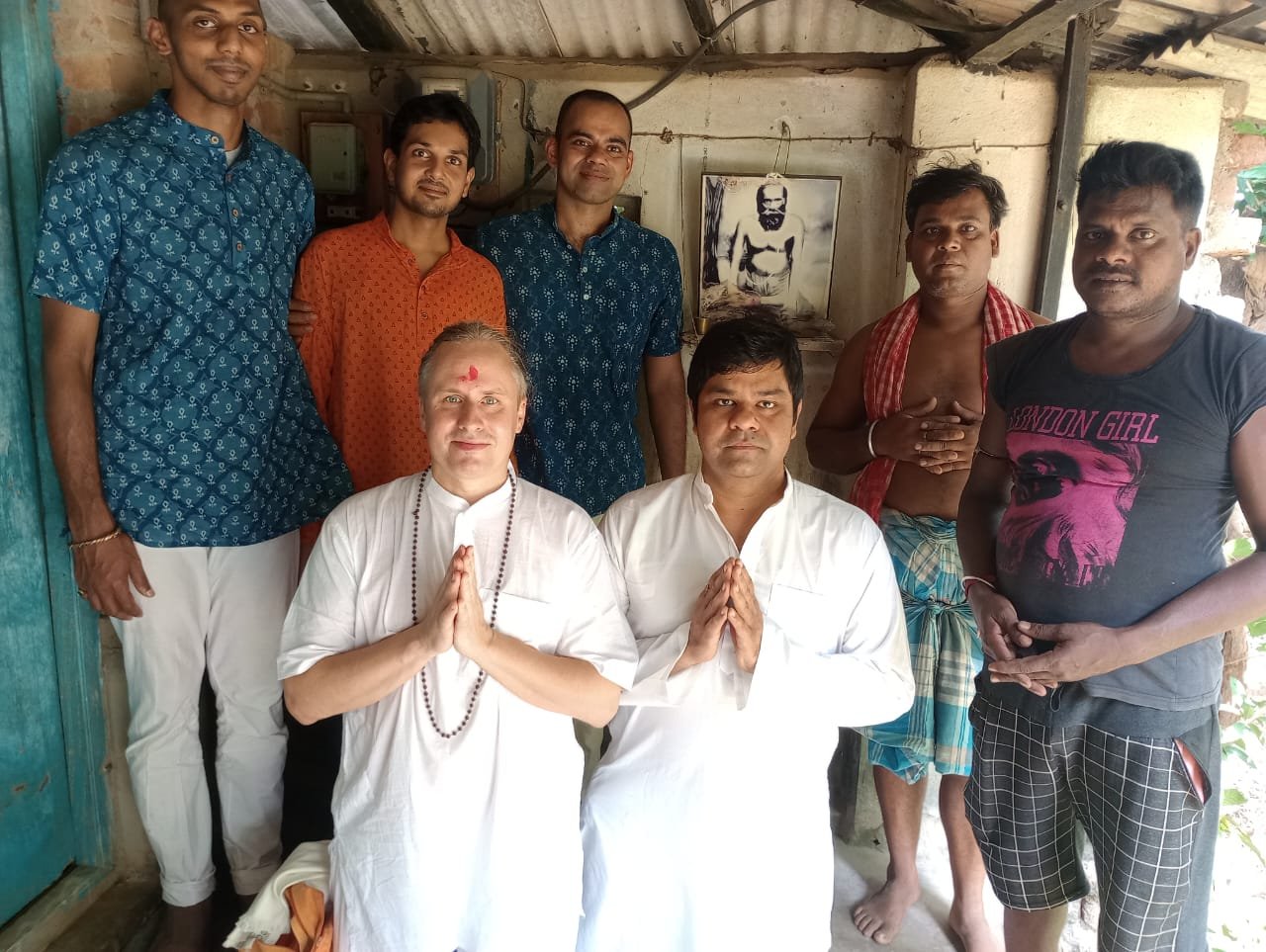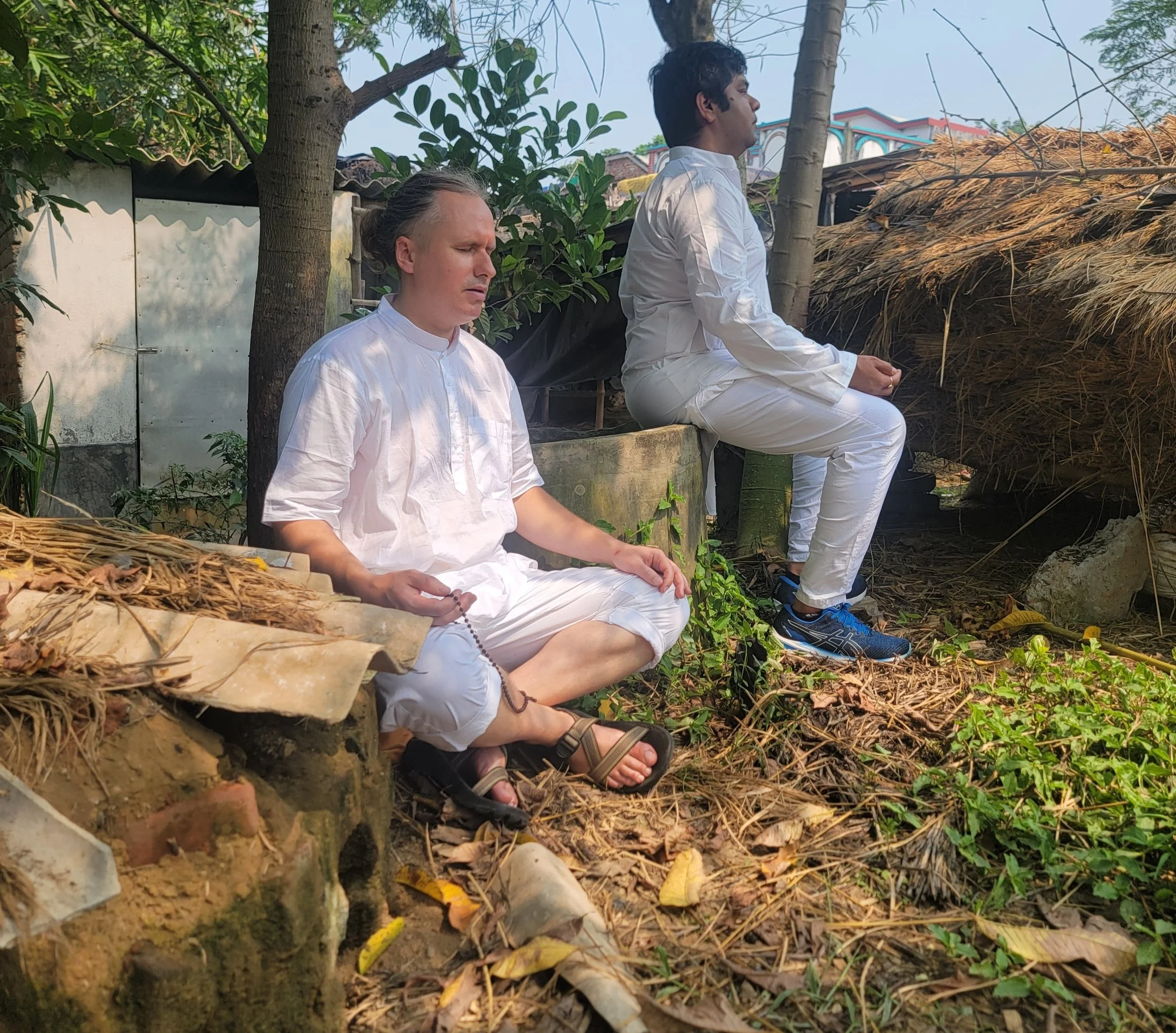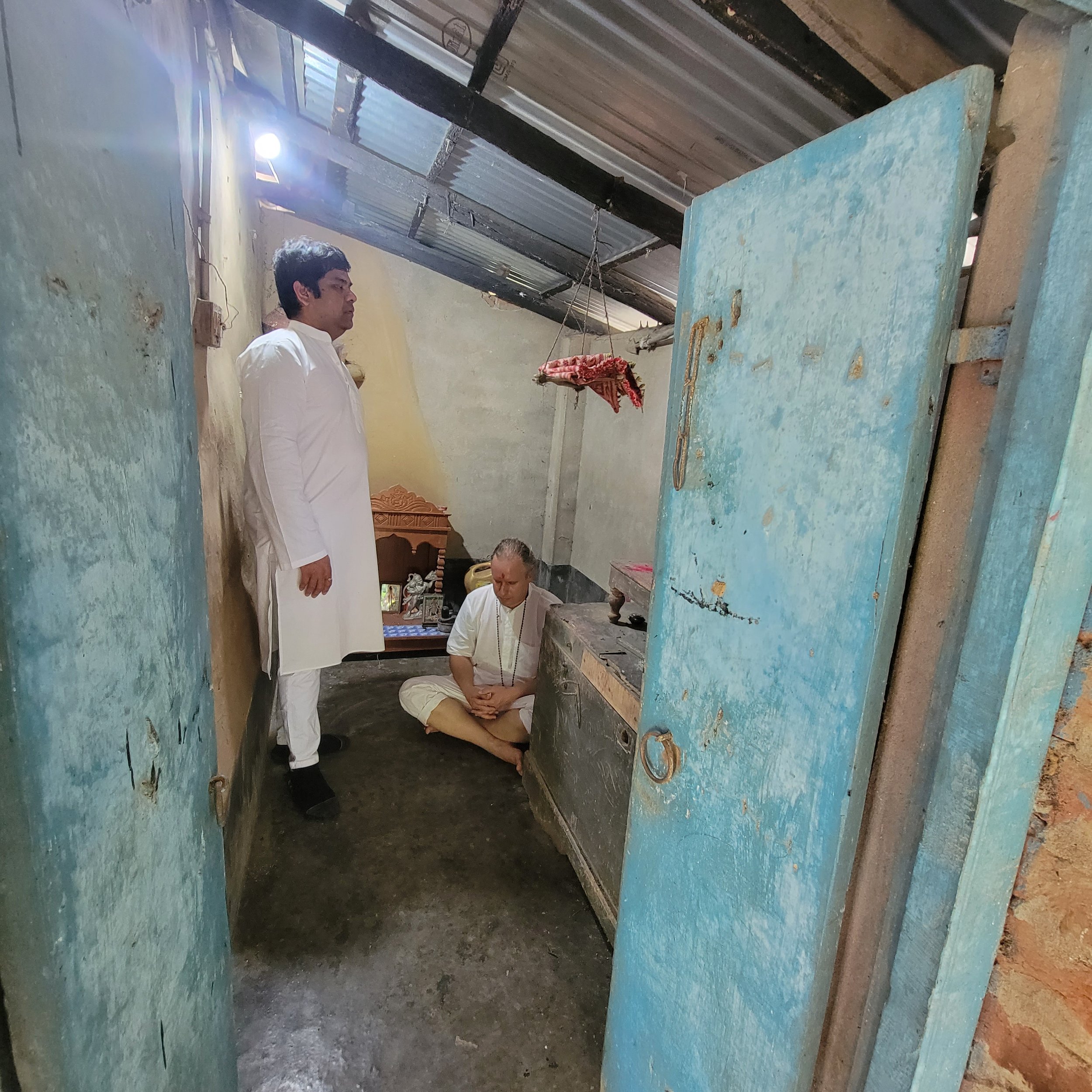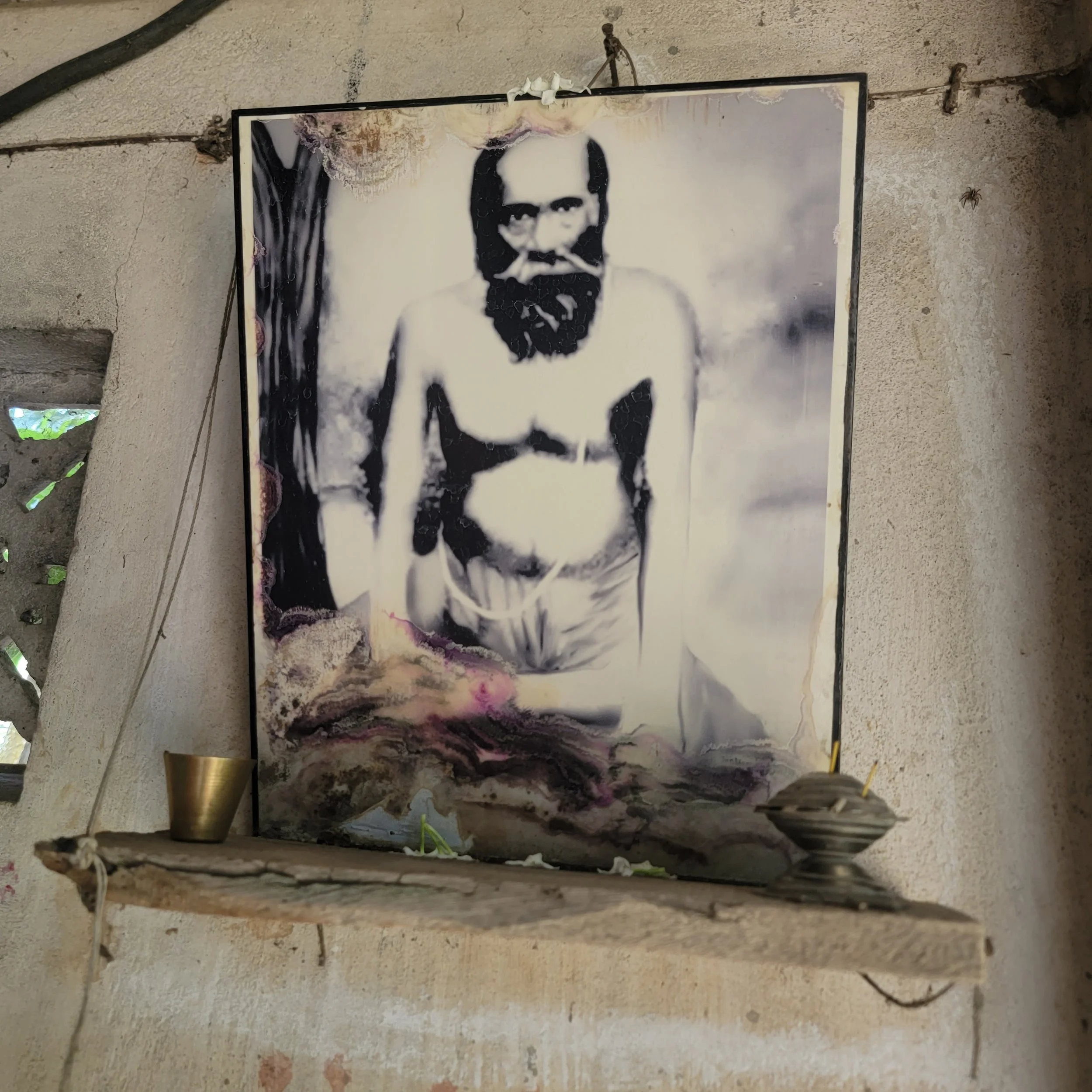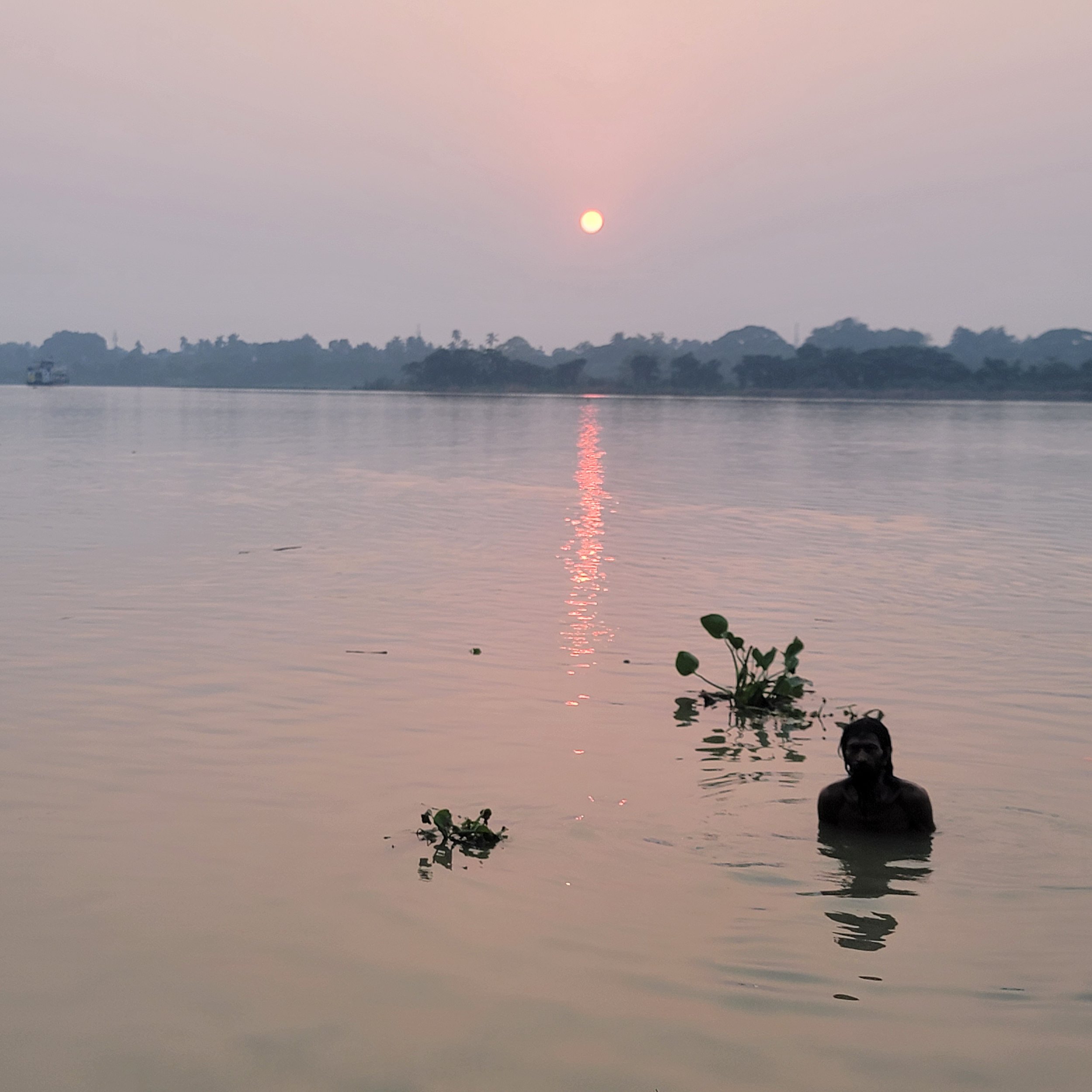The group in front of Ram Gopal’s hut. Arun on the extreme right.
After two blissful days in the city of joy (a common epithet for Kolkata), on Monday, Oct 16th, we were ready to embark on an adventure, stepping away from the city into the heartland of Bengal. Our goal was to visit the home/site where Yogananda visited and meditated with the sleepless saint, Ram Gopal Muzumdar, and also the places where the great saint mystic Ramprasad lived and worshipped Kali.
The events that unfolded on this blessed day will remain forever etched in my memory as a firsthand testimony to the presence of the Guru's grace and his guidance that echoes within and without every step of the disciple's journey.
Meditating at the spot where Yogananda and Ram Gopal meditated
Following Yogananda's guidance, we decided to bow to the stone image of Siva at the temple in Tarakeswar. The experience was very different from what we had imagined - but not in a good way! On top of the complete chaos in the temple campus, we were constantly bothered, harassed, and misguided by greedy priests who did not allow a minute's peace for any of us. We had to pay large sums of money just to relieve ourselves from their clutches and couldn't wait to get out of there after bowing to the stone image.
From the temple, we kept driving, following directions for "Ranbajpur" (a village too small to exist on google maps). As if our Guru was playing a joke on us, we stopped to ask a dozen people in the span of 45 minutes, and their response was just what Yogananda received "only a krosha". We were directed left and right on rural roads with bright green paddy fields and banana groves with the same promise, "just a little bit ahead."
Inside the hut where Ram Gopal’s family lived. Many articles used by Ram Gopal are kept in a wooden trunk here
We neared the village and stopped by a local tea shop for a cup of chai. So far no one recognized the name "Ram Gopal". We were not sure how to proceed. And right then, a man passing by stopped his motorcycle and approached us. The one Caucasian face in the group was enough clue for him. He understood what we were there for. And he was a local villager who knew where the site was!
This man was on his way to the bank. But now the masters had stopped him, and he knew his assignment. He graciously guided us and then took us by foot to the site where Ram Gopal lived. The careful orchestration of the different events that day was far beyond an accident. This kind man became our guide and shared a lot about Ram Gopal, as he was a villager that lived very close to the site. In contrast to what we had experienced with the pandits in Tarakeswar, he was genuinely kind and just wanted to help.
In the sweltering heat, we sat and meditated for 15 mins at the site of the original hut that Yogananda visited. Near the hut was another house with a thatched roof where Ram Gopal's children are said to have lived after his time.
The only picture of Ram Gopal that is available. Worship happens twice daily at this altar
As we walked around the area, our guide was also able to find and bring to us the man who had the keys to that house. He was a very impoverished and uneducated farmer named Arun. Arun looked like someone who had received no education and barely had anything to feed his family - and he was. And yet, such sincere faith and devotion exuded from this man that we were bathed in that sweetness. Again, in stark contrast to what we experienced at Tarakeswar.
Arun referred to Ram Gopal as "baba" or simply, "father". He shared stories after stories of miracles that Baba had manifested. He knew without a doubt that Baba was in charge of his life. Twice everyday, he did puja and offered prasad in front of the picture of Baba.
Undoubtedly, our meeting with Arun and everything that happened that day was through Baba's grace. No one found this site unless baba himself wanted them to - not even Yogananda, who got lost in these paddy fields. In fact, Master once told Swamiji apart from the five gurus of this lineage, the only others mentioned in the Autobiography of a yogi who are fully self-realized are Ram Gopal and Swami Pranabananda (the saint with two bodies).
We also visted two temples - one of Goddess Sheetala and another of Kali that Ramprasad had consecrated in the village. Neither have an image now. But are places of worship where clay images are made once a year for annual festivities and then dissolved.
As we headed out of the village we couldn't believe the sequence of events that unfolded that morning and the blessings that were bestowed on us.
The serene Kali temple at the site where Ramprasad lived
From there, we took many rural roads and, after many hours of driving, reached Halishahar, another small town in rural Bengal where the great saint mystic Ramprasad lived.
There was no mystery to crack here. It was simply magical to be in the grounds blessed by this great saint, who was a source of inspiration for Ramakrishna and Yogananda. Ramakrishna would go into ecstasy when he heard songs of Ramprasad. Yogananda translated one of his famous songs into english as "will that day o come to me, ma". Swami Kriyananda very often shared the story of how Kali came in the form of a young girl and playfully helped Ramprasad.
Sunset on the Ganges, at the spot where Ramprasad merged into the river
The temple of Kali at this site was serene and blissful. I sat in front of the Kali and sang many songs of Ramprsad to my heart's content. It was a surreal experience.
We enjoyed the most beautiful sunset with our feet in the Ganges river, exactly at the spot where Ramprasad entered the water with the image of Kali on the sacred day of Kali puja, and merged into the river.
The experience at this site made Kali so alive that it was even more powerful when we visited the Dakshineshwar temple the next day for the second time. We chanted and meditated in the courtyard where Master had his samadhi experience - one of my deepest meditations on this trip, so far.

